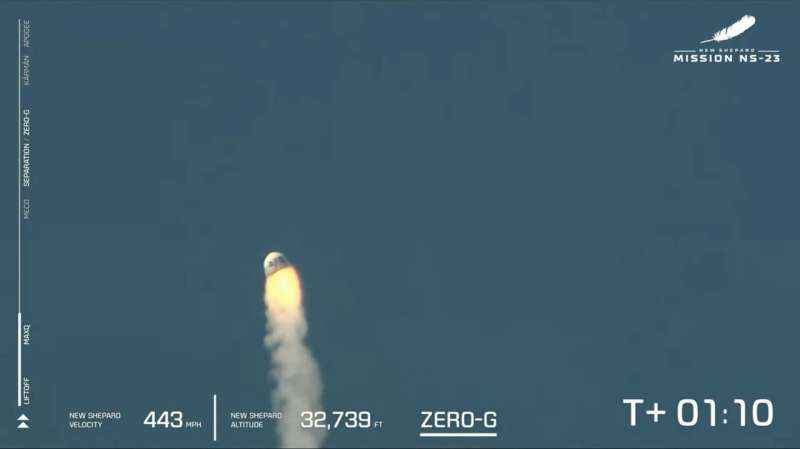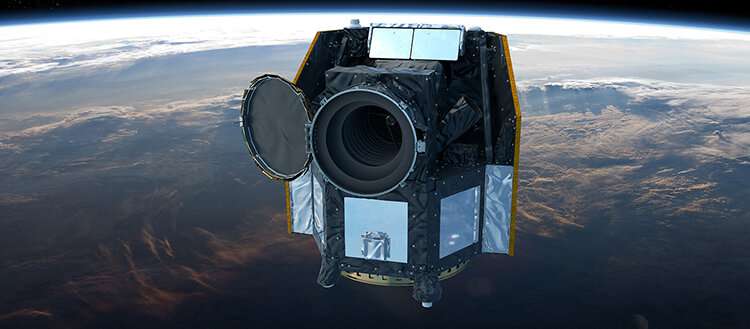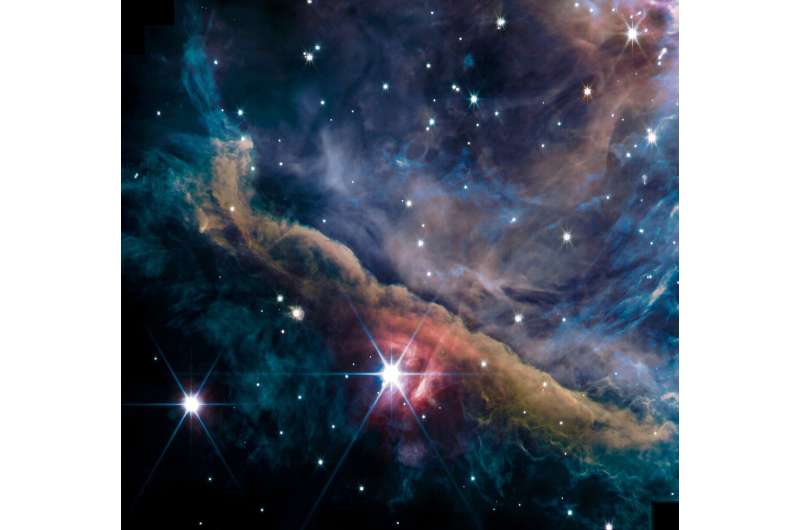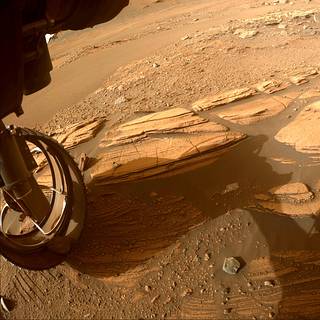
Copernical Team
Uncrewed Blue Origin rocket crashes in setback for space tourism
 An uncrewed Blue Origin rocket carrying research payloads crashed shortly after liftoff from Texas on Monday, but the capsule carrying experiments escaped and floated safely back to Earth.
The incident marked a setback for Amazon founder and executive chair Jeff Bezos' company as well as the space tourism sector, though observers were encouraged by the fact that had people been aboard, they
An uncrewed Blue Origin rocket carrying research payloads crashed shortly after liftoff from Texas on Monday, but the capsule carrying experiments escaped and floated safely back to Earth.
The incident marked a setback for Amazon founder and executive chair Jeff Bezos' company as well as the space tourism sector, though observers were encouraged by the fact that had people been aboard, they Bezos rocket crashes after liftoff, only experiments aboard

Jeff Bezos' rocket company suffered its first launch failure Monday.
CHEOPS space telescope celebrates first thousand days in orbit

After 1,000 days in orbit around the Earth, the CHEOPS space telescope shows almost no signs of wear. Under these conditions, it could continue to reveal the fascinating details of many exoplanets for many years to come. CHEOPS is a joint mission of the European Space Agency (ESA) and Switzerland, led by the University of Bern (UNIBE) in collaboration with the University of Geneva (UNIGE).
Since its launch from Europe's Spaceport in French Guiana, on December 18, 2019, the CHEOPS telescope in Earth's orbit has demonstrated its functionality and precision beyond expectations. During this time, it has revealed the characteristics of numerous fascinating planets beyond our solar system (exoplanets) and has become a key instrument for astronomers in Europe and worldwide.
In over 1 million of minutes of observation time, CHEOPS has revealed exoplanets from every angle: their night sides when they pass in front of their stars, their day sides when they pass behind their stars and all the phases in between, just like the moon.
Webb telescope captures 'breathtaking' images of Orion Nebula

The wall of dense gas and dust resembles a massive winged creature, its glowing maw lit by a bright star as it soars through cosmic filaments.
An international research team on Monday revealed the first images of the Orion Nebula captured with the James Webb Space Telescope, leaving astronomers "blown away."
The stellar nursery is situated in the constellation Orion, 1,350 light-years away from Earth, in a similar setting in which our own solar system was birthed more than 4.5 billion years ago.
Astronomers are interested in the region to better understand what happened during the first million years of our planetary evolution.
The images were obtained as part of the Early Release Science program and involved more than 100 scientists in 18 countries, with institutions including the French National Center for Scientific Research (CNRS), Western University in Canada, and the University of Michigan.
SpaceX says likely won't need 42,000 satellites for Starlink internet
 SpaceX, which has requested authorisation to deploy up to 42,000 satellites to provide its Starlink satellite internet service, probably won't need to launch that many into orbit, its chief operations officer said Monday.
Starlink - the satellite internet service of tech billionaire Elon Musk - offers high-speed broadband service to customers in areas that are poorly or not served by fixed
SpaceX, which has requested authorisation to deploy up to 42,000 satellites to provide its Starlink satellite internet service, probably won't need to launch that many into orbit, its chief operations officer said Monday.
Starlink - the satellite internet service of tech billionaire Elon Musk - offers high-speed broadband service to customers in areas that are poorly or not served by fixed Blue Origin rocket suffers booster failure, prompting emergency abort system
 Blue Origin's New Shepard rocket suffered a booster failure after lifting off Monday morning, causing an emergency abort system to separate the capsule from the booster.
The unmanned mission was carrying 36 payloads from academia, research institutions, and students across the globe and was expected to reach the edge of space and return in a series of suborbital flights.
It was t
Blue Origin's New Shepard rocket suffered a booster failure after lifting off Monday morning, causing an emergency abort system to separate the capsule from the booster.
The unmanned mission was carrying 36 payloads from academia, research institutions, and students across the globe and was expected to reach the edge of space and return in a series of suborbital flights.
It was t Uncrewed Blue Origin rocket crashes, capsule recovered
 An uncrewed Blue Origin rocket carrying research payloads crashed shortly after liftoff on Monday, but the capsule carrying experiments escaped and floated safely back to Earth, Jeff Bezos' space company said.
The company tweeted a short video clip showing the moment when the capsule fired emergency thrusters to separate from its booster rocket, around a minute after launching from Blue Orig
An uncrewed Blue Origin rocket carrying research payloads crashed shortly after liftoff on Monday, but the capsule carrying experiments escaped and floated safely back to Earth, Jeff Bezos' space company said.
The company tweeted a short video clip showing the moment when the capsule fired emergency thrusters to separate from its booster rocket, around a minute after launching from Blue Orig Bezos rocket fails during liftoff, only experiments aboard

Jeff Bezos' rocket company suffered its first launch failure Monday.
NASA to Host Briefing on Perseverance Mars Rover Mission Operations
 NASA will host a briefing at 11:30 a.m. EDT (8:30 a.m. PDT) on Thursday, Sept. 15, at the agency’s Jet Propulsion Laboratory in Southern California to provide highlights from the first year and a half of the Perseverance rover’s exploration of Mars.
NASA will host a briefing at 11:30 a.m. EDT (8:30 a.m. PDT) on Thursday, Sept. 15, at the agency’s Jet Propulsion Laboratory in Southern California to provide highlights from the first year and a half of the Perseverance rover’s exploration of Mars. A thousand days of CHEOPS
 After a thousand days in orbit, the CHEOPS space telescope shows almost no signs of wear. Under these conditions, it could continue to reveal details of some of the most fascinating exoplanets for quite some time. CHEOPS is a joint mission by the European Space Agency (ESA) and Switzerland, under the aegis of the University of Bern in collaboration with the University of Geneva.
Since its
After a thousand days in orbit, the CHEOPS space telescope shows almost no signs of wear. Under these conditions, it could continue to reveal details of some of the most fascinating exoplanets for quite some time. CHEOPS is a joint mission by the European Space Agency (ESA) and Switzerland, under the aegis of the University of Bern in collaboration with the University of Geneva.
Since its 
